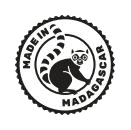Unpublished Alomac Data
The percent change in circulating CD45dim CD34+ (solid line) and CD34+CD133 (dashed line) stem cells following consumption of A macroclada is shown as averages + SEM. Flow cytometry analysis of peripheral blood
Unpublished Alomac Data Read More »






